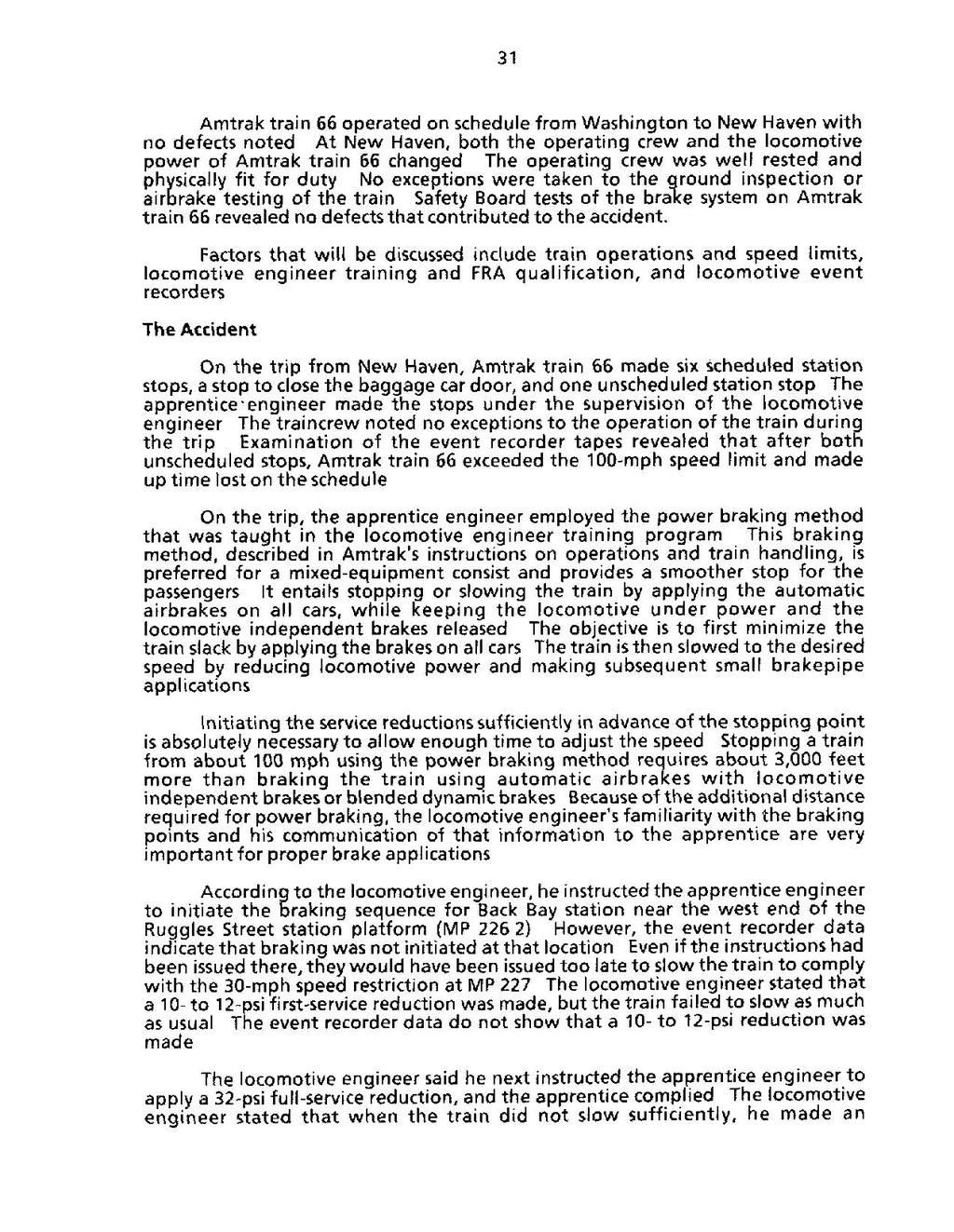31
Amtrak train 66 operated on schedule from Washington to New Haven with no defects noted. At New Haven, both the operating crew and the locomotive power of Amtrak train 66 changed. The operating crew was well rested and physically fit for duty. No exceptions were taken to the ground inspection or airbrake testing of the train. Safety Board tests of the brake system on Amtrak train 66 revealed no defects that contributed to the accident.
Factors that will be discussed include train operations and speed limits, locomotive engineer training and FRA qualification, and locomotive event recorders.
The Accident
On the trip from New Haven, Amtrak train 66 made six scheduled station stops, a stop to close the baggage car door, and one unscheduled station stop. The apprentice engineer made the stops under the supervision of the locomotive engineer. The traincrew noted no exceptions to the operation of the train during the trip. Examination of the event recorder tapes revealed that after both unscheduled stops, Amtrak train 66 exceeded the 100-mph speed limit and made up time lost on the schedule.
On the trip, the apprentice engineer employed the power braking method that was taught in the locomotive engineer training program. This braking method, described in Amtrak's instructions on operations and train handling, is preferred for a mixed-equipment consist and provides a smoother stop for the passengers. It entails stopping or slowing the train by applying the automatic airbrakes on all cars, while keeping the locomotive under power and the locomotive independent brakes released. The objective is to first minimize the train slack by applying the brakes on all cars. The train is then slowed to the desired speed by reducing locomotive power and making subsequent small brakepipe applications.
Initiating the service reductions sufficiently in advance of the stopping point is absolutely necessary to allow enough time to adjust the speed. Stopping a train from about 100 mph using the power braking method requires about 3,000 feet more than braking the train using automatic airbrakes with locomotive independent brakes or blended dynamic brakes. Because of the additional distance required for power braking, the locomotive engineer's familiarity with the braking points and his communication of that information to the apprentice are very important for proper brake applications
According to the locomotive engineer, he instructed the apprentice engineer to initiate the braking sequence for Back Bay station near the west end of the Ruggles Street station platform (MP 226.2) However, the event recorder data indicate that braking was not initiated at that location. Even if the instructions had been issued there, they would have been issued too late to slow the train to comply with the 30-mph speed restriction at MP 227. The locomotive engineer stated that a 10-to 12-psi first-service reduction was made, but the train failed to slow as much as usual. The event recorder data do not show that a 10- to 12-psi reduction was made.
The locomotive engineer said he next instructed the apprentice engineer to apply a 32-psi full-service reduction, and the apprentice complied. The locomotive engineer stated that when the train did not slow sufficiently, he made an
